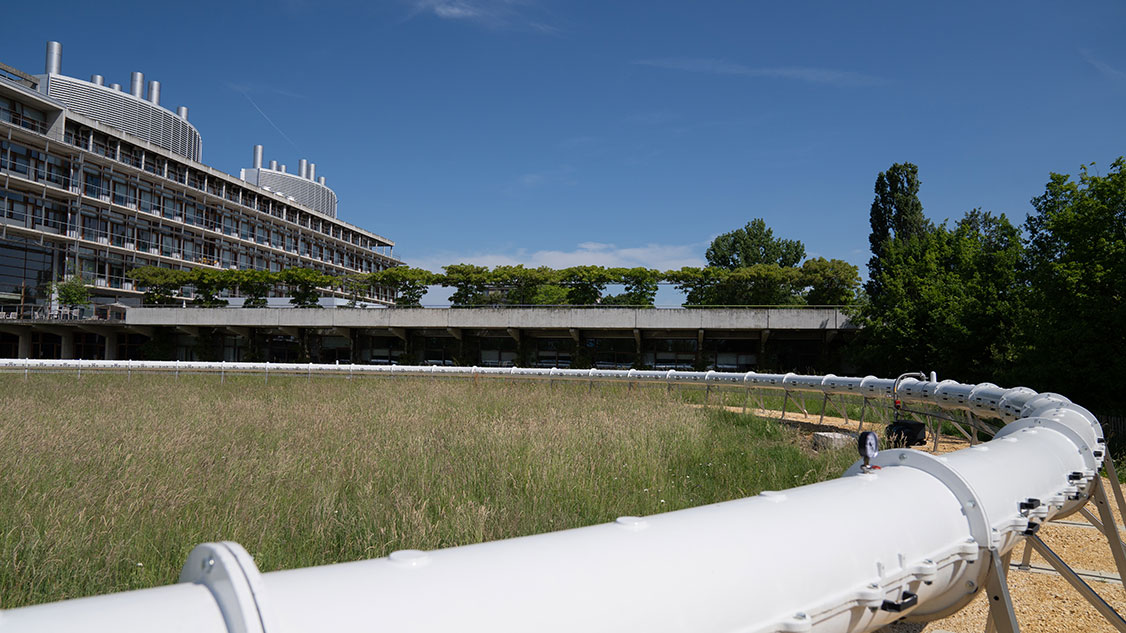Around a year ago, EPFL built the first hyperloop test track in Europe. “From here, a dozen of students and scientists are conducting research into the future of mass transportation,” says Andreas Burg, Professor of Telecommunication at EPFL. The circular testing facility on the campus simulates an infinitely long hyperloop and contains a remotely controlled pod. “To ensure it can be controlled, the pod needs to be connected wirelessly,” says Andreas Burg. This is where 5G comes into play: to control the pod in real time, Swisscom provides the facility with the latest 5G mobile generation. Adrian Schumacher, Swisscom mobile network expert, says: “The vacuum tubes in the hyperloop system are made of metal and obstruct mobile signal reception.” Swisscom has therefore equipped the facility with its own mobile radio cell. Adrian Schumacher: “The pods move at ultra-high speeds, placing high demands on wireless data transmission. The latest 5G mobile generation is ideal for transferring high data volumes and enabling the system to be controlled with very low latency, or response time.
Andreas Burg says: “The 5G network allows us to control the pod and collect data, which is vital to our ongoing research into hyperloop systems.” EPFL will officially launch its hyperloop during late summer 2022, and research and development will continue until then.
